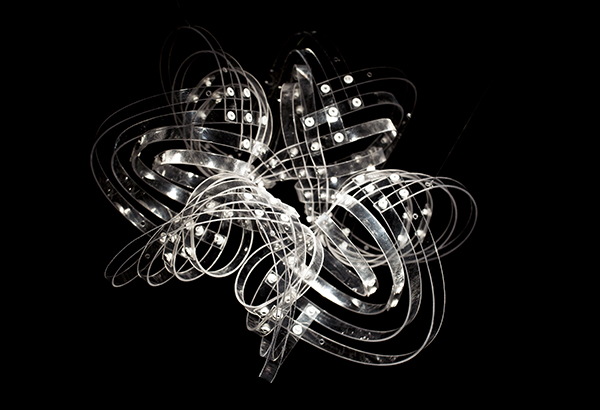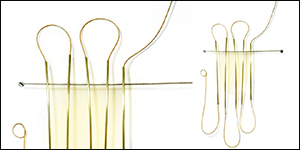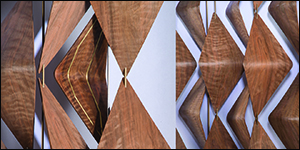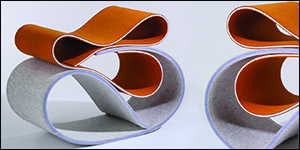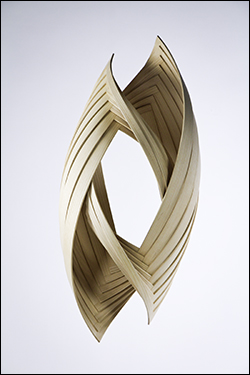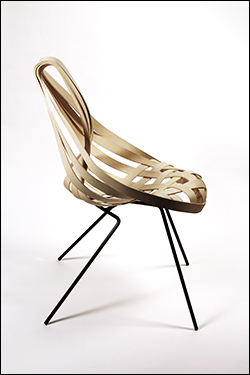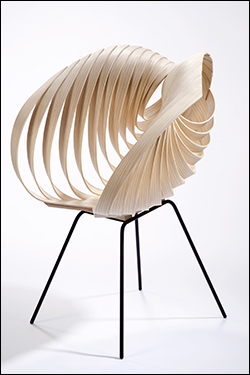Design After Dark happens again this year on February 6 at the Bindery on Blake, with the theme of “CUT.” The difference this year? The artists! All but one are new to Design After Dark in 2015. Here, we take a look at two emerging artists participating in this year’s event, Elish Warlop and Laura Kishimoto.
Both are graduates of the Rhode Island School of Design and bring a fresh take to Design After Dark. Modern In Denver caught up with the talented designers to learn more about what you can expect at next Friday’s event. Meet the duo below, and be sure to snag one of the limited number of Vernissage tickets, offering exclusive access to Design After Dark from 6–7 p.m., admission to the event, a chance to mingle with participating artists and designers, and the opportunity to pre-purchase artworks and silent auction items before General Admission to the event.
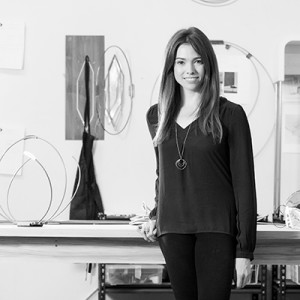
ELISH WARLOP
Elish Warlop is a licensed architect with an MFA in furniture design. Elish Warlop Design Studio is her multi-disciplinary design firm focusing on furniture, lighting, and objects, and her work addresses notions of scale, repetition, and engagement. “I am interested in how we go from continuously streaming in this world to singularly focused,” she said. “I want my work to be something unpacked by the viewer, revealed, or discovered.” Warlop is one of Design Within Reach’s newest designers. Warlop has been featured in national design publications, New York’s ICFF, and is one of Design Within Reach’s newest designers.
The Design After Dark theme this year is “CUT.” In a literal way, I have cut and sliced glass disks in order to illuminate and reveal their unique textures, using LEDs. I see my work in relation to this theme as tool to draw people inward, to reveal and illuminate what is beneath the surface. I am interested in objects that tell their stories, objects that unveil a unique understanding at each new level.
To make the project, first the glass had to be created. I worked with the artists at Blake Street Glass in Denver to create the shapes. They were spun on the pipe and hand-shaped as they rotated. In order to create the imperfections, we used a form that created indentations in the glass, which then turned into bubbles. At my shop, I cut and soldered the metal to match each individual disk, then wired the lamps by placing the LEDs into the grooves we created.
I think my architectural background taught me a lot about research, process, and objective critique. When I find something that inspires me, I will re-construct it, take apart, and re-imagine it. I don’t believe in full ideas taking shape in your head at once; for me it is a spark that is followed by research and analysis (which is more fun than it sounds). But my work is rarely what I first imagined. It is often bettered through experimentation, a give and take, while learning about new materials and technologies.
I would like my work to be something that is considered delicate, thoughtful, contemplative. Highlighting the spaces of light—or forces and shadows—that were previously unseen. I want my pieces to change with interaction, providing ownership for the people who engage. Many of my pieces have moving components; I want to make the static come to life through an active participation.
Denver has a lot to offer for artists/designers, as there is a growing community of like-minded people here, space to work, and, of course, the mountains. We have a great studio space up in Wheat Ridge. I share this space with two of my colleagues, and it has become a place where we can draw on each other’s experience and expertise for inspiration and new ideas.
Take a look at some of Warlop’s work here:
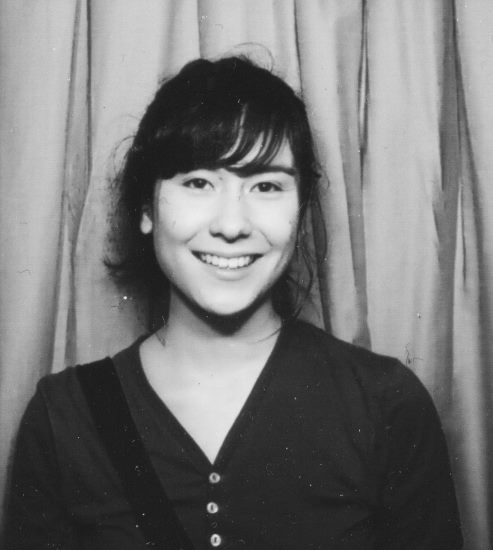 Laura Kishimoto
Laura Kishimoto
Laura Kishimoto is a designer/maker living in Denver and a recent graduate of the Rhode Island School of Design. “I was initially drawn to furniture design because it occupies a unique position between the fields of fine art and design,” she said. “Furniture can both exist as a product, addressing a specific need, or as a stand alone sculptural object. And in both cases, a user/viewer is necessary to complete the piece of furniture: whether to give it function by physically engaging with it or to give it meaning by imbuing it with their narrative and emotional response.” Modern In Denver caught up with Kishimoto to learn more about her work and her Design After Dark project. Read on.
My Design After Dark object is a radially woven sculpture made out of riveted strips of plastic and wood. To create the interwoven central layers, I fastened strips of polycarbonate plastic together with brass rivets. For the peripheral layers, I decided to use a more structural material than plastic so that the finished object could stand on its edge. Wood is my preferred medium for its natural beauty and created an interesting juxtaposition with the plastic. I freeform laminated thin layers of ash throughout the plastic core to complete object, and applied a white wash finish.
The Design After Dark prompt “CUT” particularly resonated with me, as I would consider the developmental phase of a project equal parts destruction and creation. To cut is a verb that implies decisive and irreversible action. Designing an object is a continuous series of choices made in an effort to accentuate and clarify the designer’s intentions, and all extraneous elements must be discarded/cut regardless of sentimental attachments. Often I will literally cut into a developing design by cutting up and splicing the models I make.
Whenever I design a new piece of work, I always aim to strike a balance in the control I have over the final outcome. If my hand is too heavy in the making process, the finished piece can appear contrived and unnatural. The viewer becomes so preoccupied with the overwrought nature of the design that they cannot see beyond it. However, if I give too much control over to my materials or techniques, the piece quickly loses all sense of intention and the viewer is unable to identify with the piece at all. With careful balance I can create a cohesive object that compels the viewers to respond to it and appears to have formed organically, without human intervention.
I feel furniture is often disregarded because of its functionality. It becomes such an integral part of day-to-day life that it ceases to be an object of its own right. With my furniture design, I hope to draw the viewer/user’s attention back to the division of space furniture creates, its intimate interaction with the human body, and the three dimensional composition created with and without a user. I would like the viewer/user to question the piece of furniture, just as they would a piece of art hanging on the wall in a museum. I would like them to speculate on the designer’s intentions and process, and then ultimately begin to project their own interpretations and personal narratives onto the piece.
Take a look at some of Kishimoto’s work here:
Modern In Denver also got a sneak preview of the artists’ Design After Dark models. Check it out:
